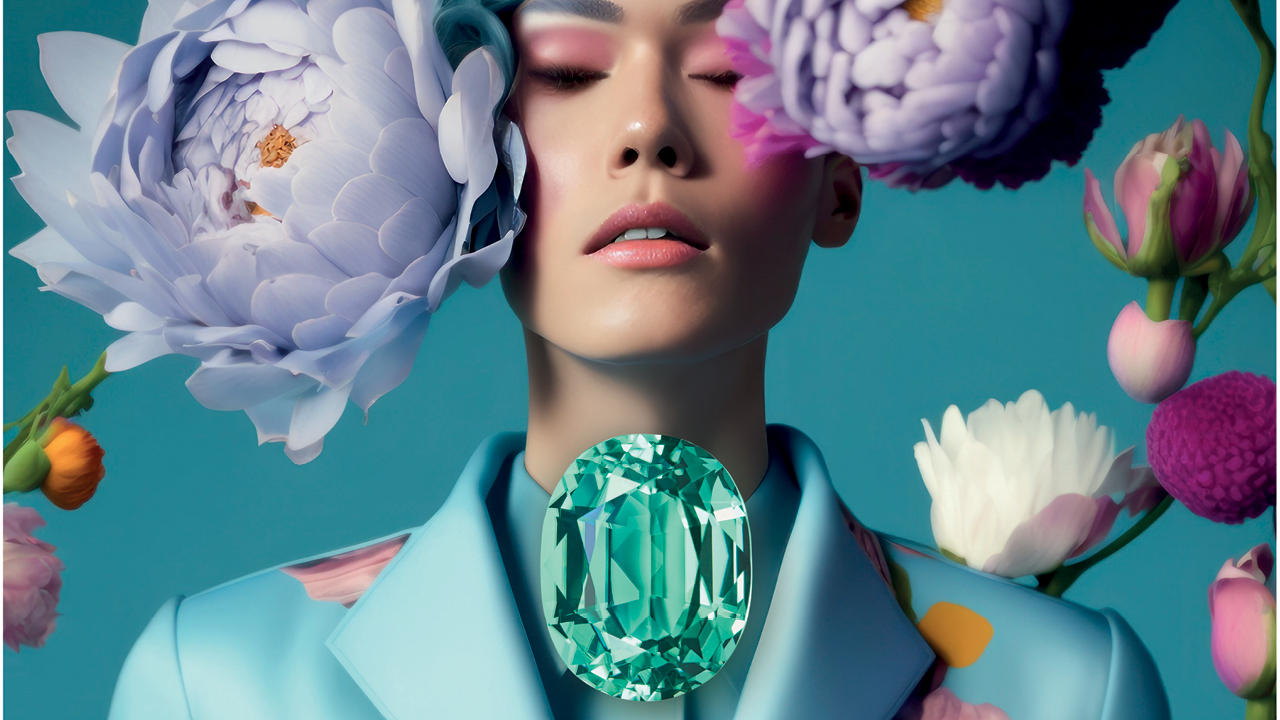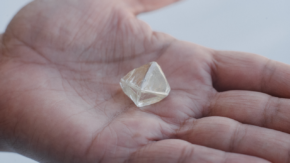Artificial intelligence (AI) promises to reshape the jewelry sector, ushering in transformative advancements in design, manufacturing and retail. The pandemic’s push toward digitalization has helped drive this journey, according to Paola De Luca, founder and creative director of trend-forecasting agency The Futurist. While disruptive changes in AI may take five to 10 years to assimilate fully, she says, the industry is already witnessing a significant shift.
AI plays a multifaceted role in the industry, streamlining production, customization, 3D visualization, and photography, as well as enhancing the overall customer experience. It also contributes to market analysis, helps track and forecast data and sales, and aids in planning stock and production.
“The real revolution today lies in our ability to prompt information now rather than code it,” says De Luca. “Embracing this transition empowers the industry, and I see it as absolutely positive.”
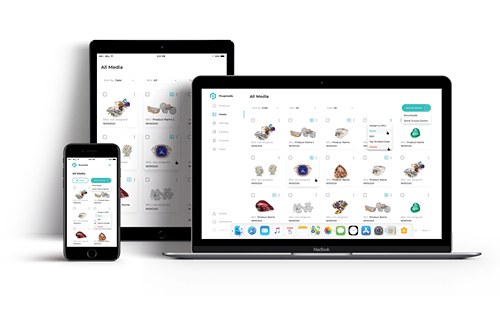
for the trade. (Picup Media)
A collaborator, not a rival
Behind the scenes, independent designers and manufacturers are exploring possibilities with popular AI software tools like image generators Midjourney and BlueWillow. Manufacturers from Thailand and Dubai have reported experimenting with AI but haven’t yet integrated it into their production.
AI can currently generate two-dimensional images resembling sketches or computer-aided design (CAD) renderings. However, the transition from text prompts to 3D printing in the jewelry industry is still in its infancy, says British jewelry historian Jack Ogden, who gave a seminar on “How AI Might Disrupt the Industry” at the 2023 Inhorgenta Munich show.
Whether designers wield a traditional pencil or navigate the digital realm of CAD, AI emerges as a dynamic collaborator, offering tools and possibilities that redefine the boundaries of artistic expression. In 2021, Belgium-based artistic research platform Artificial Intelligems — which explores jewelry adornment through AI technology — conducted a co-creation experiment between artists and an existing machine-learning algorithm.
For that study, “124 artists and designers worldwide responded to our open call, contributing nearly 1,000 images,” says company cofounder Anneleen Swillen. “These visuals fueled the training of a machine-learning algorithm, NVIDIA StyleGAN, to generate new ‘phygital’ pieces known as ‘Ornamutations’ by utilizing images of other artists’ pieces as source material. This adds complexity to questions like authorship, ownership, copyright, agency, and the evolving role of the artist.”
Canada-based designer Nick Koss of Volund Jewelry has been leveraging AI techniques for personalized jewelry design since 2015. He does not view AI as inherently negative; he believes in utilizing it judiciously and ethically. For him, that means mastering the technology to enhance client satisfaction, rather than merely to reduce costs or simplify processes.
“We [at Volund] outline the desired outcome and let a simulated life form explore multiple solutions,” he explains. “The most promising results are then ‘bred’ further, incorporating an element of randomness. This process, resembling an alchemical transformation, brings forth novel and unforeseen designs. We halt the process at a point where we find designs that resonate with us.”
Koss points to other practical AI applications for jewelers, such as suggesting modifications to enhance a piece’s center of gravity, especially in pendants and necklaces. “AI can also provide recommendations for material [changes] or support[-based] changes to improve the security and preservation of delicate stones, as well as optimizing the positioning of wax models in a flask to ensure efficient flow during casting.”
The real revolution today lies in our ability to prompt information now rather than code it.
The dilemma of public perception
For those unfamiliar with AI, there is a sense of apprehension, often rooted in misconception or a lack of full understanding. Some fear that AI will take over their jobs. However, De Luca stresses that AI is a supportive tool to enhance human creativity and explore further possibilities.
“AI only poses a threat [to jobs that entail] repetitive tasks, [as it excels] in automating such functions,” she says. While it may be proficient in analyzing data efficiently, it “falls short in fostering creativity.”
Koss agrees, emphasizing that AI should augment, not replace, imagination and critical thinking.
“Progress inevitably makes those unwilling to adapt obsolete,” he says. “However, it also provides an opportunity for those eager to refine their craft, allowing them to distinguish themselves not merely by adopting trends, but by delivering superior offerings to their clients.”
Swillen, too, believes AI can “reveal new perspectives, enabling designers to transcend existing frameworks and conventions.” An aspect she finds particularly intriguing is “the ability to visualize the seemingly impossible…. I am curious to see if AI could conceptualize ideas beyond what I, or humans in general, could envision.”
However, the distrust this technology has encountered in the jewelry world has made some designers hesitant to embrace it openly. “Eight years ago, our discussions on AI faced skepticism from industry leaders, some dismissing it as charlatanism,” recalls Koss. “Fortunately, perspectives have evolved. Despite early challenges and [after] substantial investment, we’ve gained a distinctive edge.”
Some individuals may completely reject and abstain from using AI because of reactionary sentiments, acknowledges Swillen. “This dynamic is already at play. There are many possibilities, and it’s far from a black-and-white scenario.”
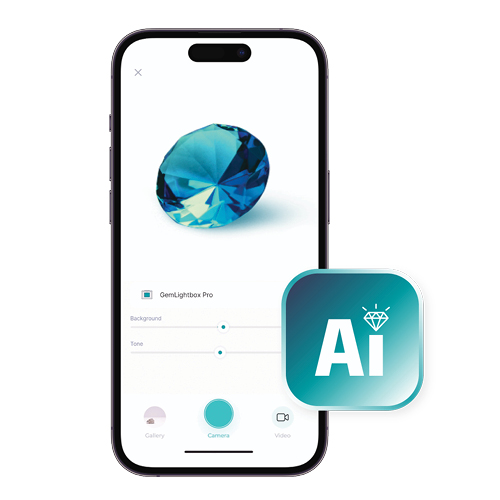
(Picup Media)
Fair access
The accessibility of AI has surged, making it both powerful and affordable. AI has democratized content creation, notes Swillen: Prompt-based models like image generator Dall-E and language-based system ChatGPT “enable anyone with an internet connection to generate content in an instant. The question arises about who has fair access to this tool and who doesn’t.”
With these advantages come legitimate concerns about privacy and data security, she adds, since the personalized experiences that AI programs create rely on user data. Swillen urges designers and manufacturers to keep that in mind when using AI models and ensure that their usage is ethical. “
Many of these tools are trained on data scraped from the internet, potentially infringing on artists’ work without their consent. There could be a risk of decontextualization of culture and crafts, resulting in a loss of awareness regarding the origin of certain images or information.”
Diversity vs. homogeneity
Ogden remains optimistic about AI’s potential to enhance mass-market products by coming up with more varied and imaginative designs. That said, he adds, there’s a risk that the opposite could occur as well: With multiple creators using the same models, the results could start to look homogeneous.
In that vein, “the erosion of skills, particularly in tactile practices like jewelry-making, raises questions about the potential loss of human touch,” remarks Swillen.
On the consumer side, digitally-generated designs could significantly impact the field of jewelry connoisseurship. As AI introduces “new levels of creativity, personalization and efficiency in the design process, there may be a need for new evaluative frameworks,” explains Swillen. The potential contrast between exceptional, one-of-a-kind pieces and readily available AI-generated jewelry might increase the allure of the former.
Even the question of what constitutes allure may eventually become the purview of AI. “Does the appeal of jewelry, whether designed by a human or a machine, need to be judged exclusively by a human?” asks Ogden. “AI could soon assess the marketability of a design by analyzing patterns from successful jewelry sales. This approach is likely already underway in some industries.”
Images of the future
The dynamic AI landscape is seeing a constant influx of free applications and new plug-ins. Online jeweler James Allen, for instance, has integrated a ChatGPT plug-in, seamlessly incorporating AI into its e-commerce experience.
This tool streamlines the purchasing process by providing tailored suggestions based on client preferences. Besides the parameters that shoppers themselves input, it takes the current trends and various price options into account, and customers receive curated jewelry options within seconds.
AI “benefits the end user greatly, as it helps them feel empowered when shopping and narrows down their options when exploring our collections,” says Shannon Delany-Ron, the e-tailer’s chief marketing officer.
In 2020, James Allen launched a virtual try-on feature using AI-driven technology, enabling customers to visualize how rings would look on their hands. Other AI applications the company is exploring include computer-generated images, inventory management, and pricing. “Leveraging AI for shopping serves as an excellent starting point to discover what a customer is seeking,” says Delany-Ron. “It opens the door for a genuine human interaction with customer service.”
AI can also automate most post-processing tasks in photography, notes William Chu, founder of Picup Media. In 2020, his company — which specializes in jewelry images, videos and e-commerce — launched GemAI, a collection of AI-powered tools for improving online jewelry sales.
In addition to its photo-retouching and editing features, GemAI employs image-recognition technology to generate automatic jewelry product descriptions. Chu has since observed a positive shift in customer engagement and loyalty, crediting “the consistency and efficiency AI brings to processing and presenting jewelry items online.”
German gemstone specialist Constantin Wild is among the few gem dealers adopting AI. In a visual campaign called “Cyber Gem World,” he combines digitally generated artwork with the stones in his collection to “propel my 175-year-old gem business into a sparkling future. I am confident that AI will bring about a transformation in the way we work, much like the internet did in its time. It has the potential to analyze sales figures, enhance communication, facilitate design and product development, and even improve gem cuts.”
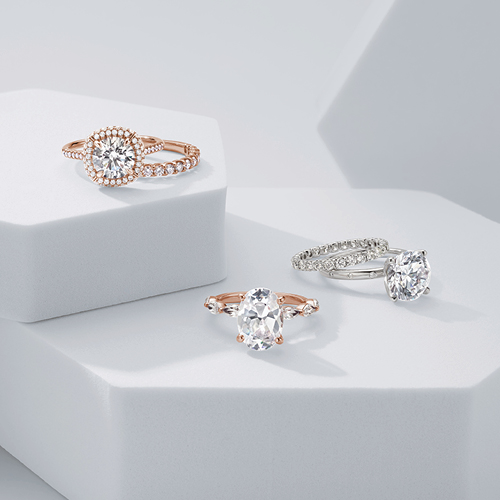
Main image: Visual from gem dealer Constantin Wild’s “Cyber Gem World” campaign. (Constantin Wild)
This article is from the January-February 2024 issue of Rapaport Magazine. View other articles here.
Stay up to date by signing up for our diamond and jewelry industry news and analysis.
